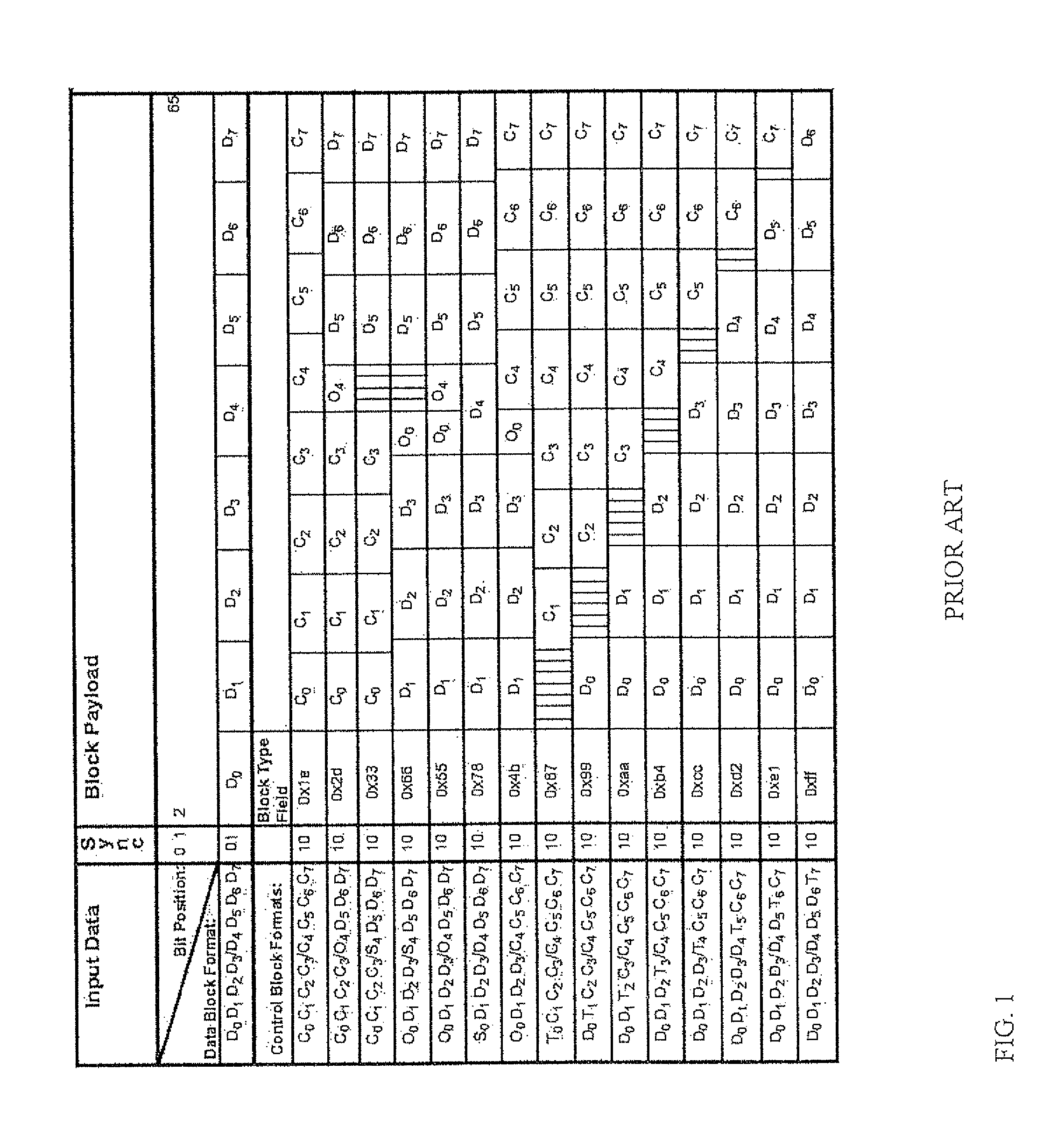End-of-burst detection for upstream channel of a point-to-multipoint link
a point-to-multipoint link and end-of-burst detection technology, applied in the field of data access systems, can solve the problems of preventing successful reception by the olt, additional latency, and difficulty for the data receiver to determine if the transmission is still in progress
- Summary
- Abstract
- Description
- Claims
- Application Information
AI Technical Summary
Benefits of technology
Problems solved by technology
Method used
Image
Examples
Embodiment Construction
[0025]The invention provides, in various embodiments, methods of signaling and end-of-transmission detection, for efficient sharing of an upstream channel in burst mode or for other purposes which require fast detection of loss of signal at a receiver. The invention is described in detail and exemplarily for 10 G-EPON using 64B / 66B encoding, although it should be clear that it is equally applicable to other networks which employ a P2MP topology together with a coding scheme such as scrambling, which renders unprocessed data payloads effectively indistinguishable from random noise. Such a network might include for example the ITU-T GPON.
[0026]In the invention, each ONU in the network is a “burst-delimiting ONU” i.e. an ONU which transmits a special binary sequence (the EBD) subsequent to the final encoded unit of its data transmission. As well, in the invention, an OLT is a “delimiter-detecting OLT”, i.e. an OLT which monitors an incoming unicast or multicast data transmission for th...
PUM
 Login to View More
Login to View More Abstract
Description
Claims
Application Information
 Login to View More
Login to View More - R&D
- Intellectual Property
- Life Sciences
- Materials
- Tech Scout
- Unparalleled Data Quality
- Higher Quality Content
- 60% Fewer Hallucinations
Browse by: Latest US Patents, China's latest patents, Technical Efficacy Thesaurus, Application Domain, Technology Topic, Popular Technical Reports.
© 2025 PatSnap. All rights reserved.Legal|Privacy policy|Modern Slavery Act Transparency Statement|Sitemap|About US| Contact US: help@patsnap.com



